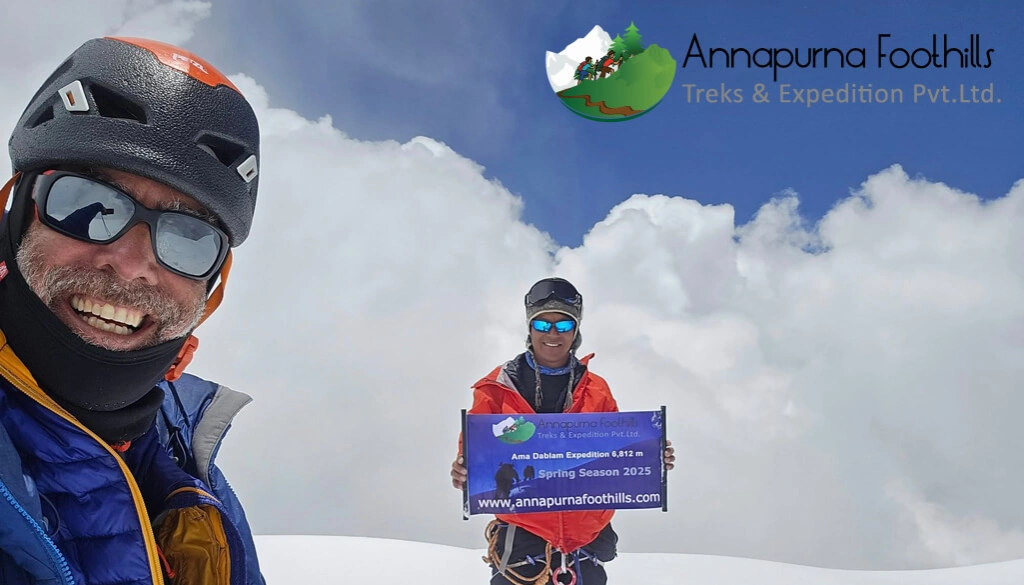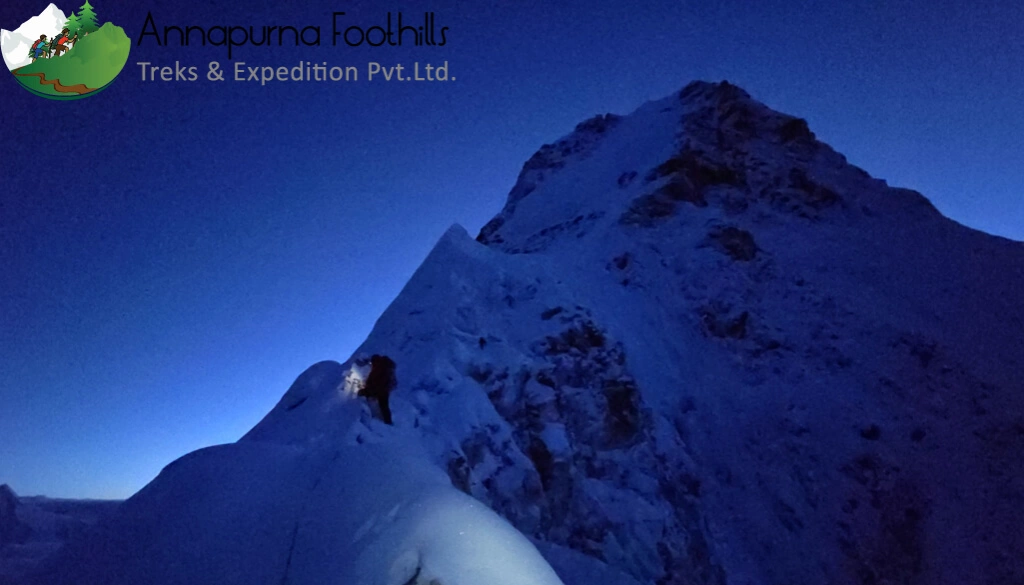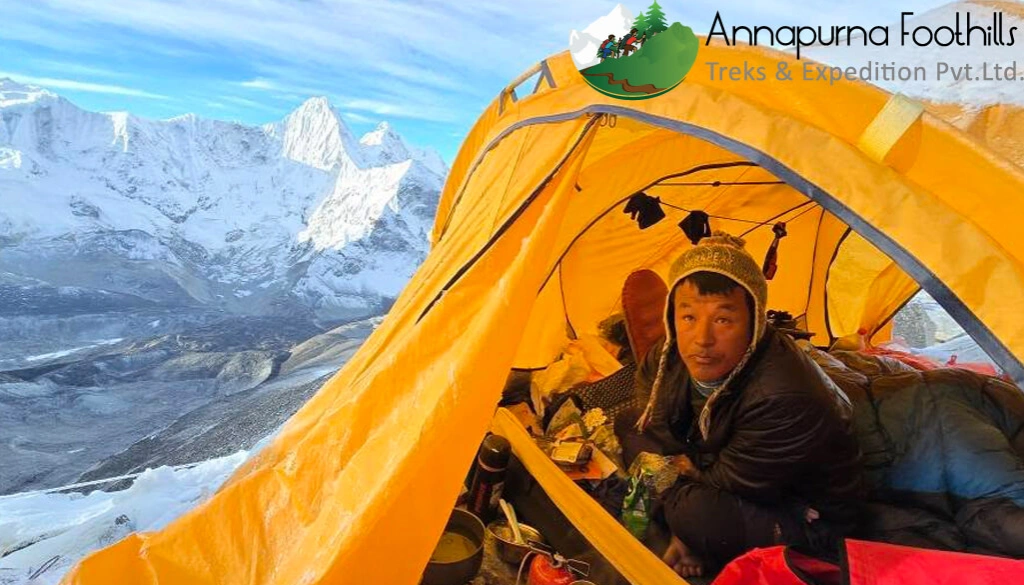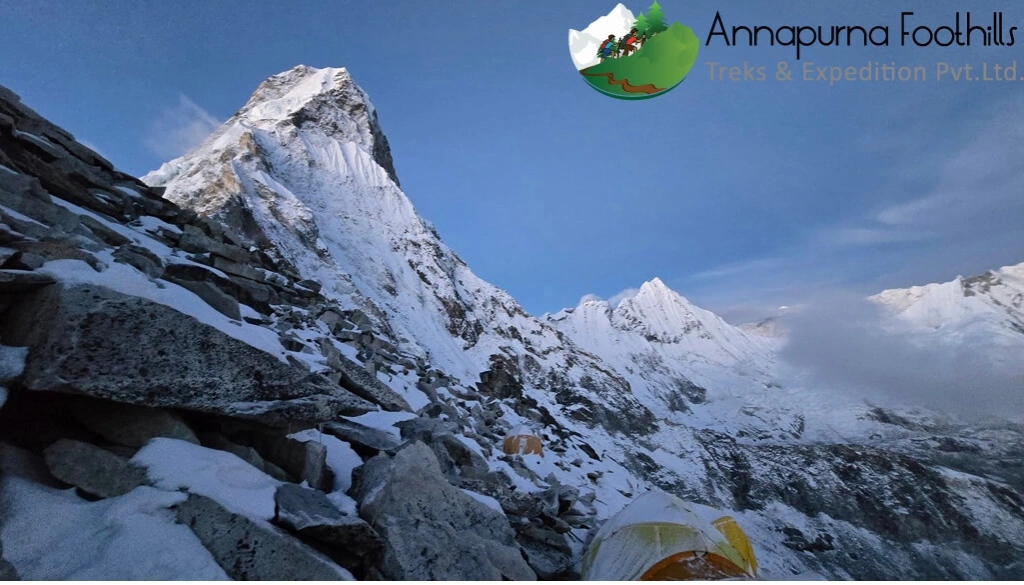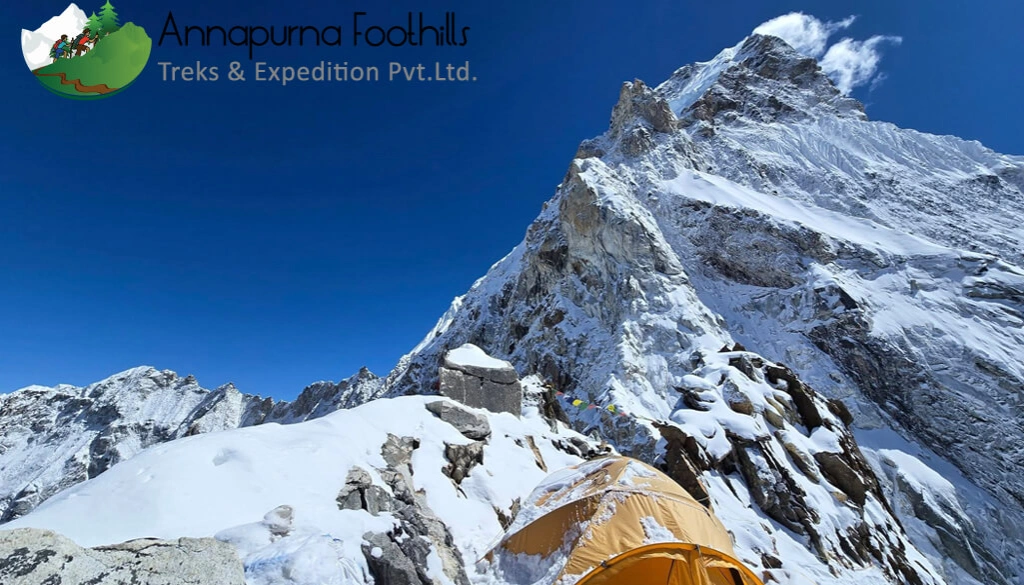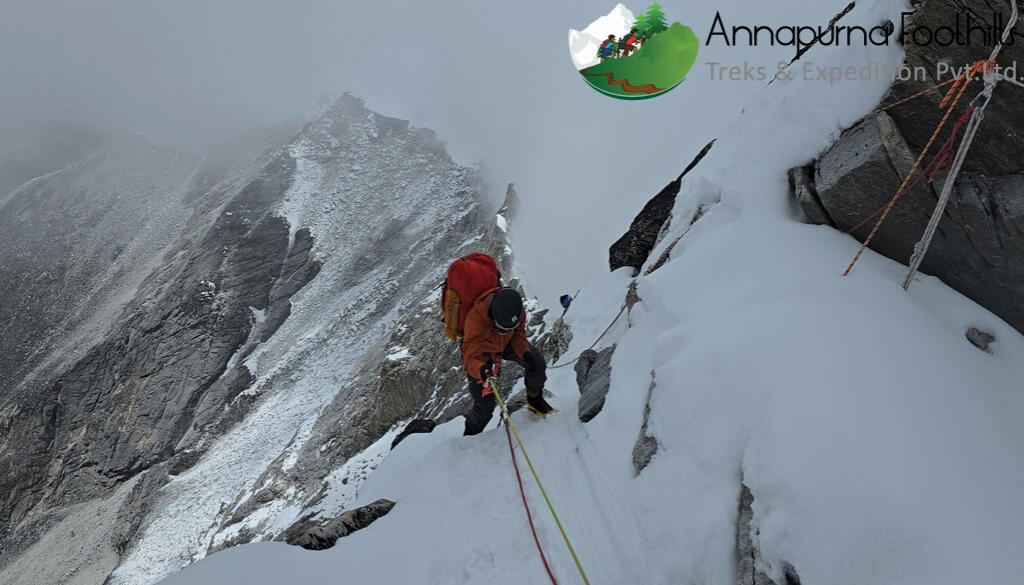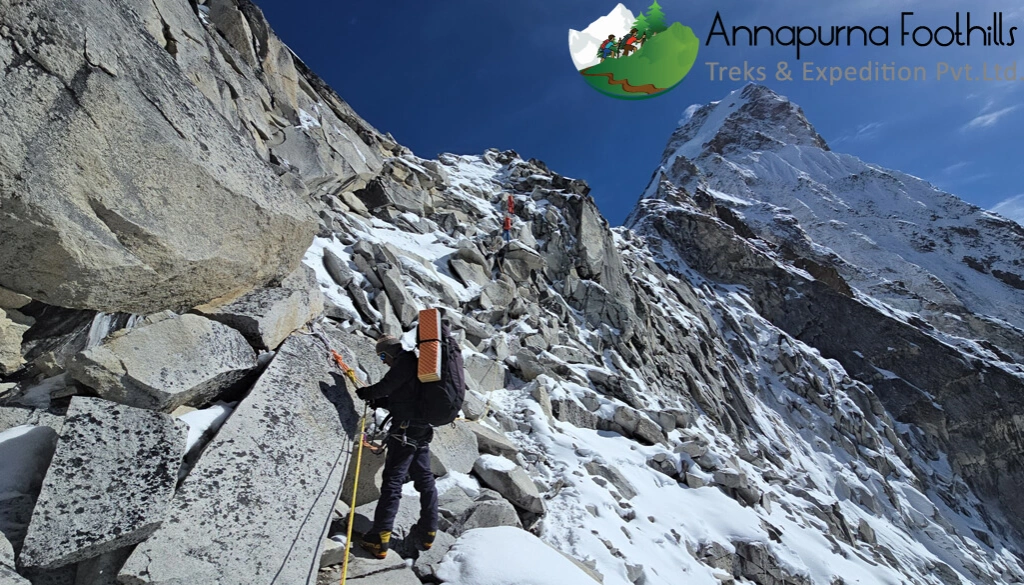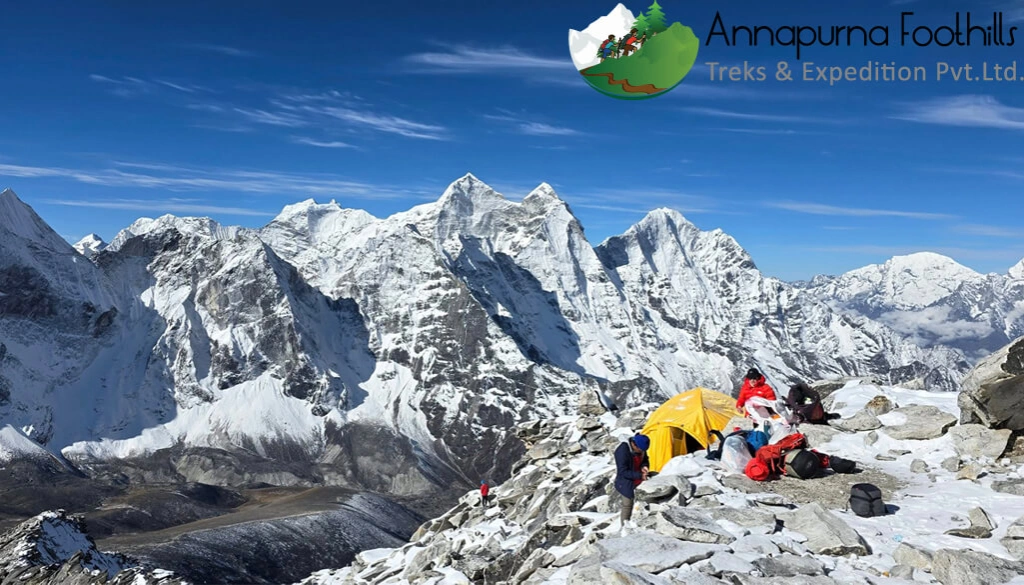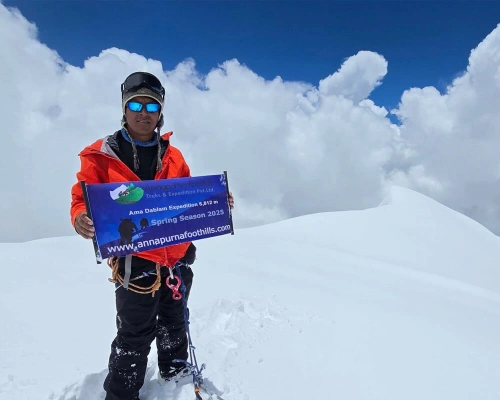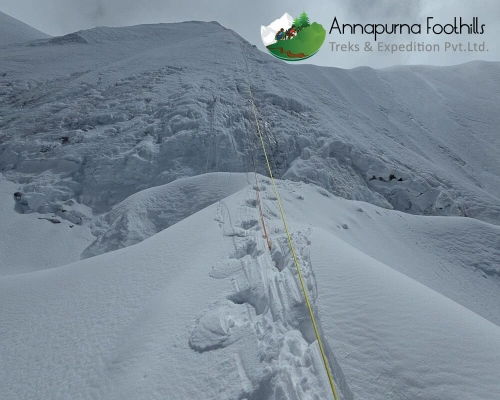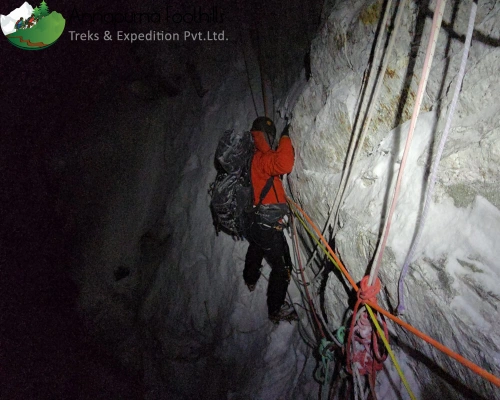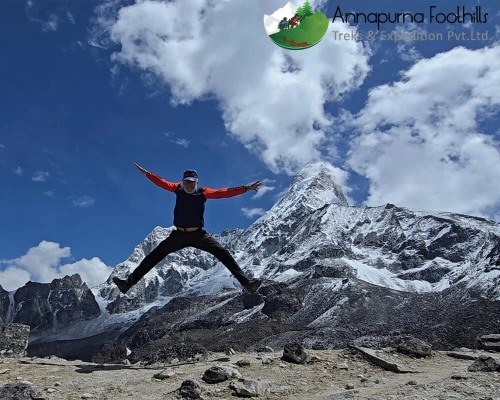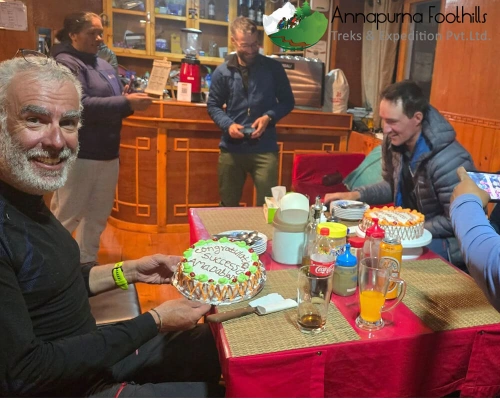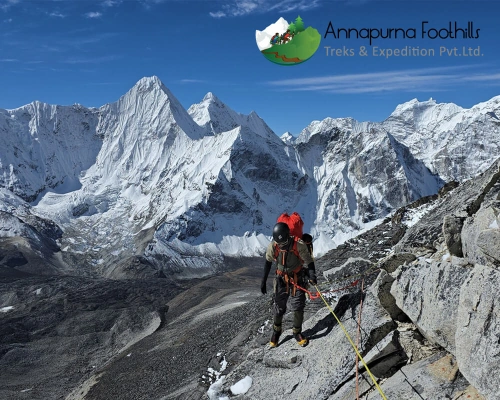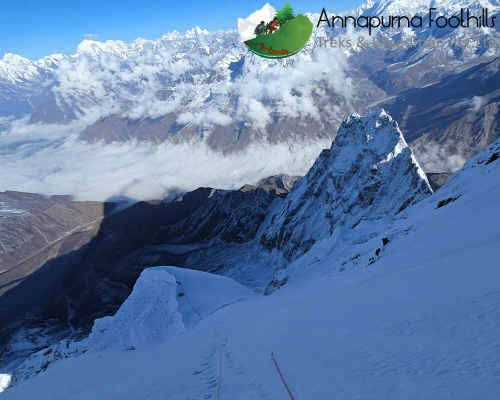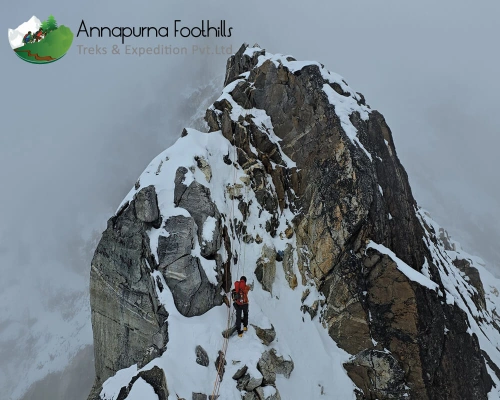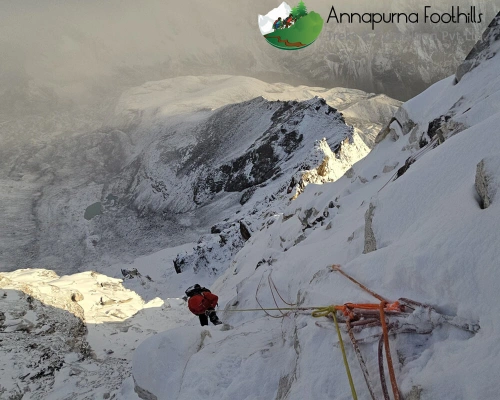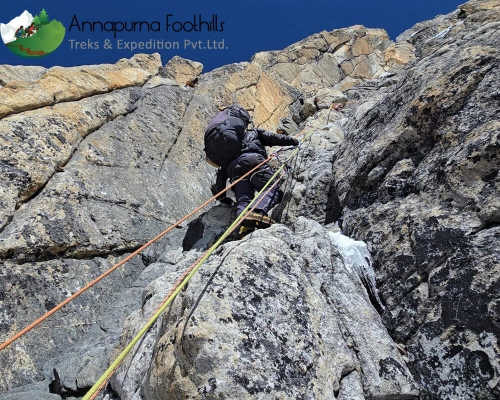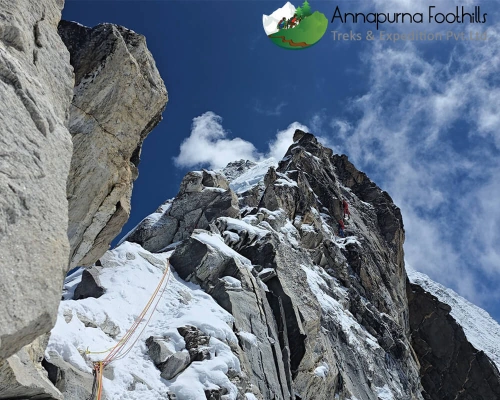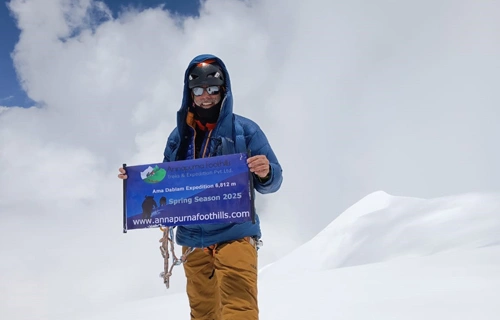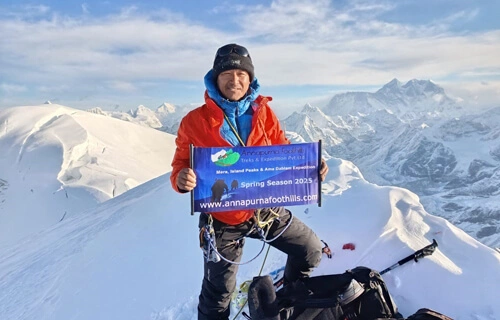About Ama Dablam Expedition
The ascent of the mighty Mount Ama Dablam via the South West Ridge, is one of the most beautiful climbs in the Himalaya of Nepal. Ama Dablam, at 6812 meters, might be less in height compared to other 7000m mountains but is compensated by its technical challenges. Perhaps the trickiest part of the climb is a 15 meter vertical section, referred to as the 'Yellow Tower', just below Camp II.
Ama means 'Mother' and Dablam means 'Jewel'. Ama Dablam is beautifully adorned by two ridges of snow joined by a hanging glacier that looks like the jewel, just as the traditional necklace worn by Sherpa Women with a pendant hanging from it. Not only is the mountain itself magnificent, from the summit of Ama Dablam, there are stunning views of Everest as well as Nuptse, Baruntse and Pumari, Lhotse Shar, Makalu and Cho Oyu.
The exciting trekking to Ama Dablam Base Camp winds through the Sherpa homeland above Tengboche monastery. The trail to Ama Dablam base camp branches off of the well-worn path to Everest Base Camp and follows the original line of ascent on the South West Ridge. The rocky trail becomes increasingly snowy nearing the approach to the summit of Ama Dablam.
We follow the original line of ascent via the southwest ridge, which is technically challenging (fairly) under normal conditions with enough rock, snow and ice to make it an interesting climb. The amount of snowfall determines the proportions of rock, snow and ice on the trail. The best time for Ama Dablam Expedition is during Autumn season( October and November) when the weather is cold but fairly predictable. Spring season is also possible. The route is less slippery underfoot during colder weather. There are good camp platforms at strategic points. Our competent Local Sherpa climbing team provides technical support and confident leadership during your Ama Dablam Expedition.
Ama Dablam Expedition Strategy:
Advanced Base Camp, 4750m, to Camp I, 5700m
The view from base camp is incredible: a stream meanders though the grassy meadows; the massif of Ama Dablam towers above; the valley Mount Taweche opens below. From here, the path winds eastward through grassy moraine ridges and scree (often icy) until reaching a broad plateau at 5150m, from where you can see the Mingbo La pass. From the plateau the trail leads north and climbs steeply to a large boulder field. We set up Advanced Base Camp, 5300m just below the bolder field.
At the end of the boulder field, slabs traverse deep crevices and to access the proper ridge there is an ascent using fixed ropes. An easy scramble up the east side of the ridge reaches Camp I at 5700m, where there are four or five tent platforms.
Camp I, 5700m to Camp II, 5900m
From Camp I, the trail follows an exposed rocky ridge dotted with towering rock fingers. The ridge is narrow at times and more crevices to be traversed on slabs.
Easy ground is followed to the start of a traverse on the east face which leads to the base of Yellow Tower. To reach Camp II, at 5900m, there is a sharp 15 meter pitch where fixed ropes are used. This is the hardest pitch on the climb. Camp II is extremely exposed, and there is very limited tent space.
Camp II, 5900m to Camp III 6300m
From Camp II, the route is more ‘mixed’ with snow and iced-up rock. The trail skirts an outcropping of red rocks and drops down to follow a snowy ridge, traversing a gorge between the Grey Tower and the lower rock wall. There are some steep snowy sections of this bottomless snowy ravine to negotiate before the trail reaches the popular Mushroom Ridge 6300m, a sheltered spot on the east side of the ridge.
Summit Day: Ama Dablam
The biggest challenges of Summit day are the snowy conditions and altitude. The trail climbs above on snow and ice to the east side of Ama Dablam. You continue to skirt the hanging glacier, or Dablam, to a small snowfield and then the climb heads directly up snow slopes to the obvious ice crest. Ice fields lead up to a highly exposed and then meets up with the 40–60 degree snow rib followed by the magnificent summit. Amazing views of Everest, Nuptse, Baruntse and Pumori, Lhotse Shar, Makalu ,Cho Oyu from the summit awaits.
Staying at Ama Dablam Base Camp
At Ama Dablam Base Camp, accommodation is provided in a clean, comfortable, and well-maintained teahouse, widely regarded for its high standard of service. It is considered one of the finest lodging options in the region. We generally offer private rooms to our guests to ensure a peaceful and restful experience. This teahouse is a preferred choice among climbers due to its excellent facilities and hospitable atmosphere.
Planning to climb Ama Dablam in 2025 and 2026 !!
Guaranteed Departures. We are preparing for our Autumn 2025 dates and groups for Ama Dablam Expediiton. Please get in touch for further details and book your spot for this beautiful climb.
